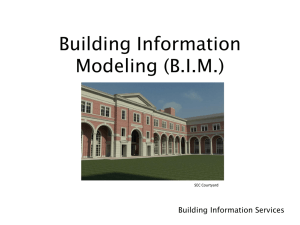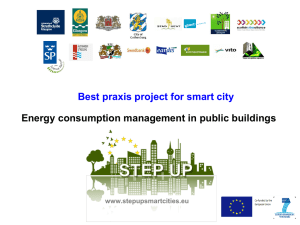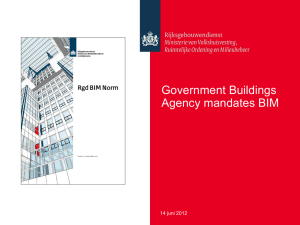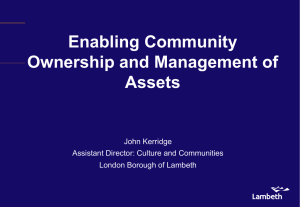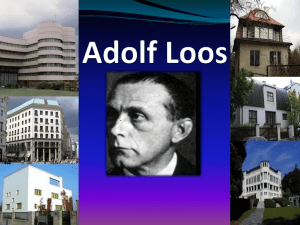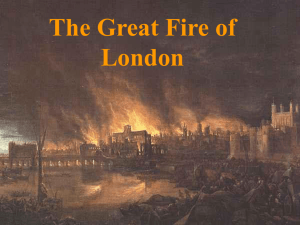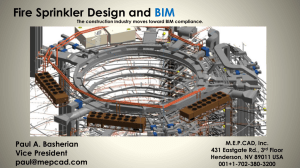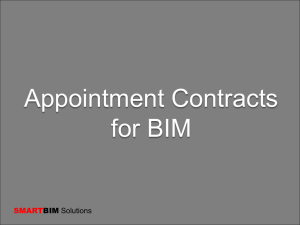BIM - BSRIA
advertisement
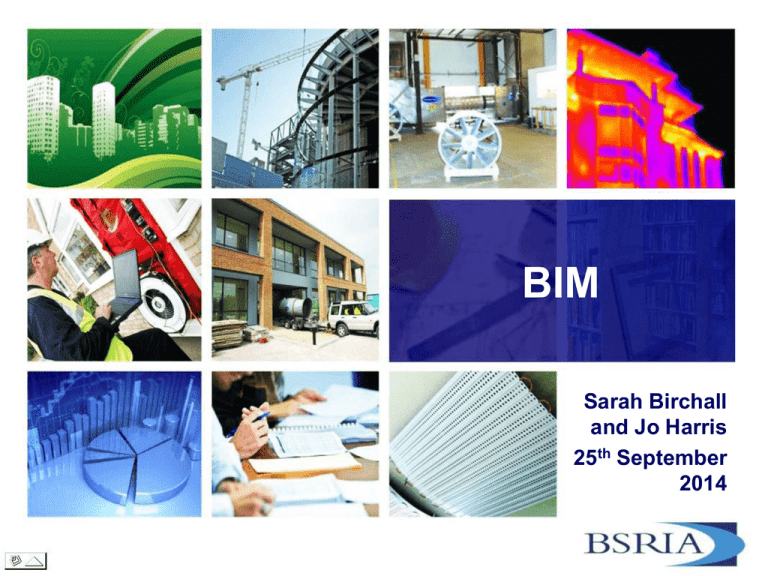
BIM Sarah Birchall and Jo Harris 25th September 2014 Overview - BIM What? Why? How? Potential…. Making buildings better 2 2 What is Building Information Modelling (BIM)? There are many definitions of what BIM is, but at its core BIM is: ‘…a managed approach to the collection and exploitation of information across a project.’ Making buildings better 3 3 The BIM Process 1 Process for data management (BS 1192/PAS 1192) 2 A method for housing the data (BIM software model) 3 A method for distributing the data (COBie + other documents) From inception to demolition Making buildings better 4 4 So why all the fuss now? Government will require fully collaborative 3D BIM (with all project and asset information, documentation and data being electronic) as a minimum by 2016. Levels of maturity BIM Level 2 Making buildings better 5 5 ‘Refined’ definition of Level 2 BIM “The seven pillars of (BIM) wisdom” 1. PAS 1192-2 2. PAS 1192-3 3. BS 1192-4 (available Autumn 2014) 4. BIM Protocol 5. GSL (Government Soft Landings) 6. Digital plan of work 7. Classification Making buildings better 6 6 TSB competition Digital Plan of Work Classification system Digital presentation tool Making buildings better 7 7 PAS 1192-2:2013 PAS 1192-2:2013 Specification for information management for the capital/delivery phase of construction projects using building information modelling Making buildings better 8 8 Information in PAS 1192-2:3013 Fundamental principles for Level 2 information management Plain Language Questions (PLQ) Employers Information requirements (EIR) BIM Execution Plan (BEP) Project Implementation Plan (PIP) Master Information Delivery Plan (MIDP) Task Information Delivery Plan (TIDP) Project delivery team roles, responsibilities and authority Making buildings better 9 9 PAS 1192-3:2014 PAS 1192-3:2014 Specification for information management for the operational phase of assets using building information modelling Making buildings better 10 10 Overview of information management in PAS 1192-3 Organizational information requirements (OIR) “data and information required to achieve the organization’s objectives” Asset information requirements (AIR) “data and information requirements of the organization in relation to the asset(s) it is responsible for” Asset information model (AIM) “data and information that relates to assets to a level required to support an organization’s asset management system” Making buildings better 11 11 Relating the PAS 1192-2 and 1192-3 components Requirements Models PAS 1192-3 Asset PAS 1192-2 Project Making buildings better 12 12 BS 1192-4 BS 1192-4:2014 Collaborative production of information Part 4: Fulfilling employers information requirements using COBie – Code of practice Making buildings better 13 13 Making buildings better 14 14 Contents of draft BS 1192-4 Introduction 1 Scope 2 Normative references 3 Terms and definitions 4 Business process 5 Purposes 6 Management and quality criteria 7 Execution Making buildings better 15 15 Building Information Model (BIM) Protocol “The Protocol identifies Building Information Models that are required to be produced by members of the Project Team and puts in place specific obligations, liabilities and associated limitations on the use of the models. The Protocol can also be used by clients to require the adoption of particular ways of working – such as the adoption of a common naming standard” Making buildings better 16 16 Building Information Model (BIM) Protocol 1. 2. 3. 4. Definitions Priority of contract documents Obligations of the Employer Obligations of the project team member 5. Electronic data exchange 6. Use of models 7. Liability in respect of a model 8. Termination Appendix 1: Levels of detail and the model production and delivery table Appendix 2: Information requirements Making buildings better 17 17 GSL (Government Soft Landings) Soft Landings “…a form of graduated handover for new and refurbished buildings, where the project team is contracted to watch over the building, support the occupant and to fine-tune the building’s systems for up to 3 years post-completion.” Making buildings better 18 18 Government Soft Landings (GSL) GSL – Taken the principles of Soft Landings and developed it for use within its own procurement strategy – Differences – the use of metrics to demonstrate compliance with the stated project outcomes – Four focus areas: 1. Functionality and effectiveness - buildings designed to meet the needs of the Occupiers; effective, productive working environments 2. Environmental – meet Government performance targets in energy efficiency, water usage and waste production 3. Facilities Management – a clear, cost efficient strategy for managing the operations of the building 4. Commissioning, Training and Handover – projects delivered, handed over and supported to meet the needs of the End Users Making buildings better 19 19 Digital Plan of Work Making buildings better 20 20 Classification Classification Searching for like ‘things’ in a model Combining models as all ‘things’ are consistently classified Enabling the aggregation of like ‘things’ in a model for the purposes of measurement, purchasing, maintenance, etc A common language for all people constructing and managing assets Making buildings better 21 21 Example: Classification in a hospital FM environment Classify four ways: Spaces – every space is classified Activities – all the activities which can be carried out within each space are classified Systems – the systems serving each space are classified Objects – the objects belonging to each system are classified In the event of chiller failure: The spaces served by the chilled water system can be identified The activities affected within those spaces can be identified The objects in the rest of the system(s) can be identified Making buildings better 22 22 ….so if you meet the requirements set out in these seven components, then you will be Level 2 BIM compliant. Making buildings better 23 23 The potential Strip the waste from processes. Achieved by sharing information…. To enable right first time installation and operation that meets the needs of the users Information about the use of the building which is informative to the operators Better buildings, with clear operational efficiencies and the best whole life value Making buildings better 24 24 BIM4FM Making buildings better 25 25 Information to make better decisions Making buildings better 26 26 BIM in Operations The majority of operaters, owners and occupiers (69.0%) recognise that BIM will become increasingly important in day-to-day working practices within the next 2-3 years (if it is not already). BIM is definitely here to stay and is growing in importance Making buildings better 27 27 Organisational requirements PAS 1192-3 Making buildings better 28 28 Potential for Operations FM engaged at start of construction projects with supply chain considering client input User focus during the construction process Competitive advantage in the FM supply chain Clear understanding of operational risk Making buildings better 29 29 How it fits… BS 1192-4 Classification BIM Protocol GSL Digital plan of work Making buildings better 30 30 BIM Summary 1. What? a managed approach to the collection and exploitation of information across a project. 2. Why? Government will require fully collaborative 3D BIM (Level 2) as a minimum by 2016. 3. How? UK Government’s BIM Level 2 requirement by use of seven components (pillars). 4. Potential….There is a huge potential, particularly for operators Making buildings better 31 31 Thank you Sarah Birchall sarah.birchall@bsria.co.uk Jo Harris jo.harris@bsria.co.uk Making buildings better 32 32


